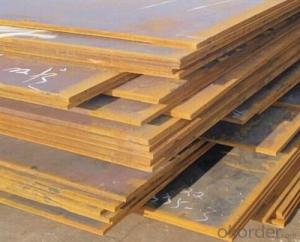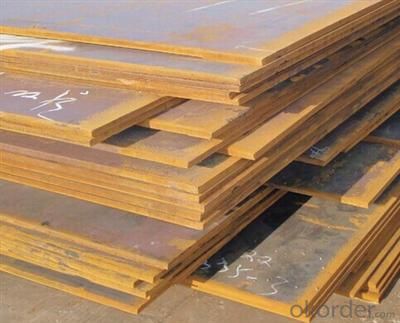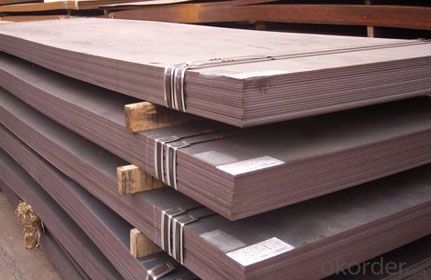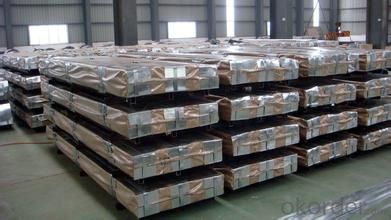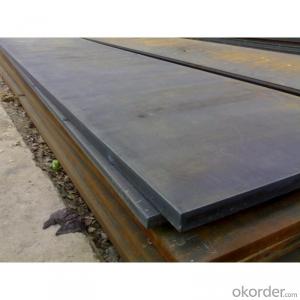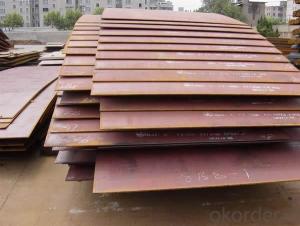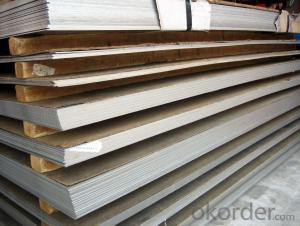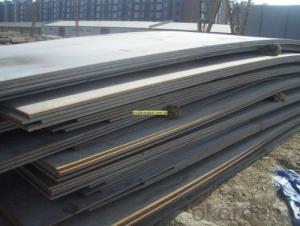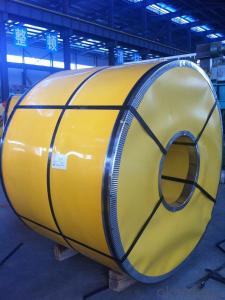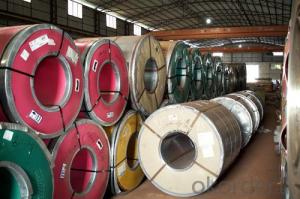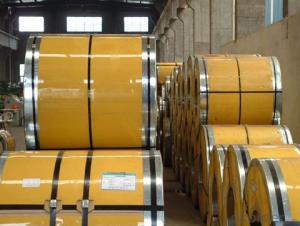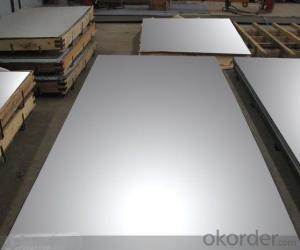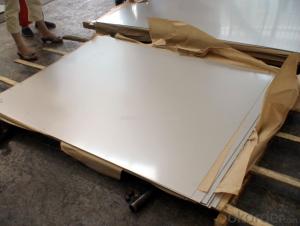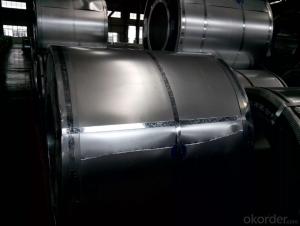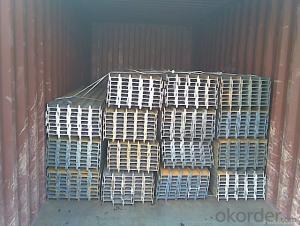Hot Rolled Steel Sheet for Shipbuilding and pipe
- Loading Port:
- Tianjin
- Payment Terms:
- TT OR LC
- Min Order Qty:
- 500 m.t.
- Supply Capability:
- 5000 m.t./month
OKorder Service Pledge
OKorder Financial Service
You Might Also Like
Specification
1. Product Description
The Billets as raw materials, through furnace heating, high-pressure water to reduce the phosphorus, then entering the roughing mill, cutting head, end, and then put into the finishing mill, cutting the edge, after the times of straightening, leveling and other finishing line treatment, and then cutting board or coil becomes the hot rolled steel sheet and hot rolled steel coil.
2. Main Features
Characteristics of hot rolled steel hot-rolled steel is a high temperature heating and rolled steel, hot rolled product has high strength, good toughness, easy to processing molding and good weldability and other excellent properties, which are widely used in ship, automobile, Bridges, buildings, machinery, pressure vessels and other manufacturing industries.
3. Excellent Product Image
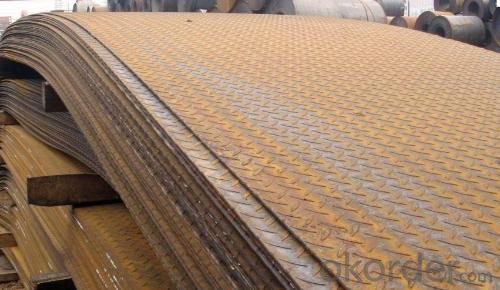
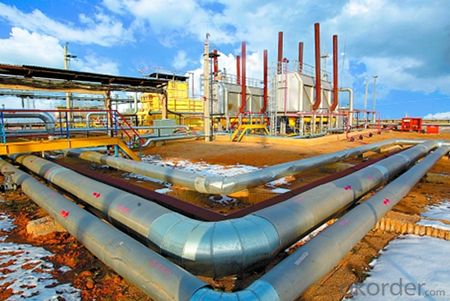

4. Application
Refers to the production according to the requirements of classification society rules for the construction of hot rolled steel plate used in the manufacture of hull structure.
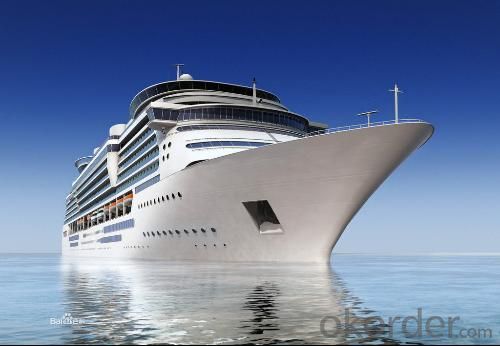
Because of poor working conditions, hull shell to chemical corrosion and electrochemical corrosion of sea water and sea creatures, microbial corrosion; Hull bear larger impact waves and alternating load; Ship shape the processing method of complex factors, so strict in hull structure steel. First good toughness is one of the most critical requirements, in addition, require high strength, good corrosion resistance, weldability, processing forming performance and surface quality. For assuring quality and ensure there is enough toughness and requirements of the chemical composition of the Mn/C above 2.5, also has strict requirements for carbon equivalent, and recognized by the survey department of steel production. Hull with structural steel in accordance with the minimum yield point strength level is divided into: general strength structural steel and high strength structural steel. General strength and high strength steel with hull structural steel points two kinds, general strength steel according to quality points A, B, D and E four grades; Strength of high strength steel and two levels and three quality grades; AH32, DH32, EH32, AH36, DH36, EH36.
China classification society standard the general strength of structural steel is divided into: A, B, D, E four quality levels (i.e., CCSA CCSB, CCSC, continental scientific drilling (CCSD); China classification society standard level of strength of high strength structural steel for three, four quality grade.
5. FAQ
1.Q: Do you have attended any exhibition?
A: We almost go to Canton Fair and Overseas Exhibitions every year.
2. Q: How to guarantee the quality of the products?
A: We have established the international advanced quality management system,every link from raw material to final product we have strict quality test;We resolutely put an end to unqualified products flowing into the market. At the same time, we will provide necessary follow-up service assurance.
3. Q: How long can we receive the product after purchase?
A: Usually within thirty working days after receiving buyer’s advance payment or LC. We will arrange the factory manufacturing as soon as possible. The cargo readiness usually takes 15-25 days, but the shipment will depend on the vessel situation.
Why choose us?
Pre-sale Service
1. Sample can be offered with sample charge and courier fee by buyer's side.
2. We have full stock,and can deliver within short time.Many styles for your choices.
3. OEM and ODM order are accepted, Any kind of logo printing or design are available.
4. Good Quality + Factory Price + Quick Response + Reliable Service, is what we are trying best to offer you
5. All of our products are produce by our professional workman and we have our high-work-effect foreign trust-worthy sales team.
6. We have 18 years' experience of design, manufacture and sell lingerie, we cherish every order from our honor.
After you choose
1. Count the most efficient shipping cost and make invoice to you at once.
2. Check quality again, then send out to you at 1-2 working day after your payment.
3. Email you the tracking no, and help to chase the parcels until it arrive you.
- Q: How are steel strips used in the production of hydraulic systems?
- Steel strips are commonly used in the production of hydraulic systems as they provide strength, durability, and stability to various components. These strips are often used to manufacture hydraulic cylinders, pipes, and fittings, ensuring their ability to withstand high pressure and heavy loads. Additionally, steel strips are used for reinforcement purposes in hydraulic hoses, ensuring their resistance to abrasion and damage. Overall, steel strips play a crucial role in enhancing the performance and reliability of hydraulic systems.
- Q: How are steel strips annealed for improved ductility?
- Steel strips are annealed for improved ductility through a process called annealing. Annealing involves heating the steel strips to a specific temperature and then slowly cooling them down. This process helps to eliminate any internal stresses and improve the ductility of the steel. The first step in annealing steel strips is heating them to a temperature above their recrystallization temperature. This temperature varies depending on the composition of the steel, but it is typically around 1000 to 1100 degrees Celsius. By heating the steel strips above this temperature, the existing grain structure is broken down, allowing new grains to form during the cooling process. After reaching the desired temperature, the steel strips are slowly cooled down. This slow cooling process, also known as controlled cooling or furnace cooling, is essential for achieving the desired ductility. It allows the newly formed grains to grow and align in a way that reduces internal stresses and promotes better ductility. The cooling rate during annealing is crucial as rapid cooling can lead to the formation of undesirable crystal structures and potentially reduce the ductility of the steel. Therefore, the cooling process is typically done in a controlled environment, such as a furnace, to ensure a gradual and uniform cooling rate. Overall, annealing steel strips for improved ductility involves heating them to a specific temperature above their recrystallization temperature and then slowly cooling them down. This process helps to eliminate internal stresses and promote the growth of new grains, resulting in improved ductility and better mechanical properties for the steel strips.
- Q: What are the different heat treatment methods for steel strips?
- There are several heat treatment methods that can be used for steel strips, each with its own advantages and purposes. These methods include annealing, quenching and tempering, hardening, and case hardening. 1. Annealing: Annealing is a process that involves heating the steel strip to a specific temperature and then cooling it slowly. This method helps to relieve internal stresses, improve ductility, and enhance the machinability of the steel. It also refines the grain structure, resulting in a softer and more homogeneous material. 2. Quenching and tempering: Quenching is a rapid cooling process that involves immersing the steel strip in a quenching medium, such as water or oil, to achieve high hardness and strength. After quenching, the steel is tempered by reheating it to a lower temperature, which reduces the brittleness and improves toughness. This method is commonly used to produce high-strength steel strips for applications that require resistance to wear and impact. 3. Hardening: Hardening is a heat treatment method that involves heating the steel strip to a specific temperature and then rapidly cooling it to achieve high hardness and strength. Unlike quenching and tempering, hardening does not involve the tempering process, which means the steel strip will retain its hardness and strength. This method is suitable for applications that require maximum hardness, such as cutting tools and machine parts. 4. Case hardening: Case hardening is a surface hardening process that involves adding carbon to the surface of the steel strip to increase its hardness while maintaining a relatively soft and tough core. This is achieved by heating the steel strip in a carbon-rich environment, such as a gas or a solid medium. Case hardening provides excellent wear resistance and is commonly used for gears, shafts, and other components that require high durability. Overall, the choice of heat treatment method for steel strips depends on the desired properties and the specific application requirements. Different heat treatment methods provide different combinations of hardness, strength, toughness, and wear resistance, allowing manufacturers to tailor the steel strips to meet their specific needs.
- Q: What are the measuring techniques for steel strips?
- Steel strips can be measured using various techniques. One commonly used method involves calipers, which are handheld devices that can determine the strip's thickness, width, and length. Calipers are known for their accuracy and user-friendliness. Alternatively, micrometers can be employed for more precise measurements, particularly for thinner steel strips. Micrometers offer greater accuracy in measuring thickness. Laser sensors are another option for measuring steel strip dimensions. These sensors utilize laser beams to scan the strip and provide precise measurements of its thickness, width, and length. Overall, these measuring techniques play a crucial role in ensuring the quality and precision of steel strips in diverse industries, including manufacturing, construction, and automotive.
- Q: Are steel strips used in the production of metal reinforcements?
- Steel strips are frequently utilized for the manufacturing of metal reinforcements, owing to their exceptional strength and durability. These strips can be molded into different shapes and structures, such as bars or mesh, which are then employed to reinforce concrete structures such as buildings, bridges, and roads. By incorporating steel strips into the production of metal reinforcements, the structural integrity and load-bearing capacity of these concrete structures are significantly enhanced, rendering them more resistant to cracking, bending, and other types of mechanical strain. Additionally, steel strips can be effortlessly tailored and fabricated to meet precise engineering specifications, making them a versatile choice for the production of metal reinforcements.
- Q: What are the safety precautions when working with steel strips?
- When working with steel strips, it is essential to follow certain safety precautions. Firstly, always wear personal protective equipment (PPE) such as safety goggles, gloves, and a helmet to protect yourself from potential injuries. Secondly, ensure that the work area is well-lit and free from any obstacles or hazards to prevent accidents. Additionally, be cautious when handling sharp edges and always use appropriate tools and equipment to manipulate the steel strips. It is crucial to practice proper lifting techniques and avoid overexertion to prevent strains or muscle injuries. Lastly, never forget to properly secure and store the steel strips to avoid tripping hazards or damage.
- Q: What are the load-bearing capacities of steel strips?
- The load-bearing capacities of steel strips differ depending on their thickness, width, and the type of steel utilized. Steel strips are designed to endure substantial weight or load without bending or breaking. Typically, the load-bearing capacity is measured by the maximum load that the strip can bear per unit of length or area, usually provided in pounds or tons. To determine the load-bearing capacity of a steel strip, various factors such as yield strength, ultimate tensile strength, and elastic modulus of the steel material should be taken into account. These properties determine the strip's ability to resist deformation under load. Different steel grades exhibit different load-bearing capacities. For example, high-strength steel strips, like those made from alloyed or heat-treated steel, generally possess higher load-bearing capacities compared to standard carbon steel strips. To accurately ascertain the load-bearing capacity of a specific steel strip, it is essential to consult engineering design codes, standards, or technical specifications. These resources offer detailed information on load-bearing capacities based on the specific dimensions and properties of the steel strip. It is crucial to consider load-bearing capacities in conjunction with other factors such as safety factors, environmental conditions, and the intended application of the steel strip. It is highly recommended to consult with a structural engineer or a knowledgeable professional to ensure the appropriate selection and usage of steel strips for a specific load-bearing application.
- Q: How are steel strips used in the manufacturing of bicycles?
- Steel strips are commonly used in the manufacturing of bicycles to form the frames, forks, and various components of the bicycle. These strips are shaped, welded, and assembled to create a strong and rigid structure that provides stability and support. Additionally, steel strips are also used in the production of bicycle accessories such as fenders, racks, and baskets.
- Q: What are the different cutting methods for steel strips?
- There are several different cutting methods for steel strips, including shearing, slitting, laser cutting, and waterjet cutting.
- Q: What is the hardness of a steel strip?
- The ability of a steel strip to resist deformation or indentation is known as its hardness. Scales like the Rockwell Hardness Scale or the Brinell Hardness Scale are often used to measure this property. Factors like composition, heat treatment, and manufacturing process can affect the specific hardness of a steel strip. Steel strips with higher hardness are usually more resistant to wear and can handle heavier loads. As a result, they are well-suited for applications that demand durability and strength, such as automotive components, tools, or machinery parts.
Send your message to us
Hot Rolled Steel Sheet for Shipbuilding and pipe
- Loading Port:
- Tianjin
- Payment Terms:
- TT OR LC
- Min Order Qty:
- 500 m.t.
- Supply Capability:
- 5000 m.t./month
OKorder Service Pledge
OKorder Financial Service
Similar products
Hot products
Hot Searches
Related keywords
